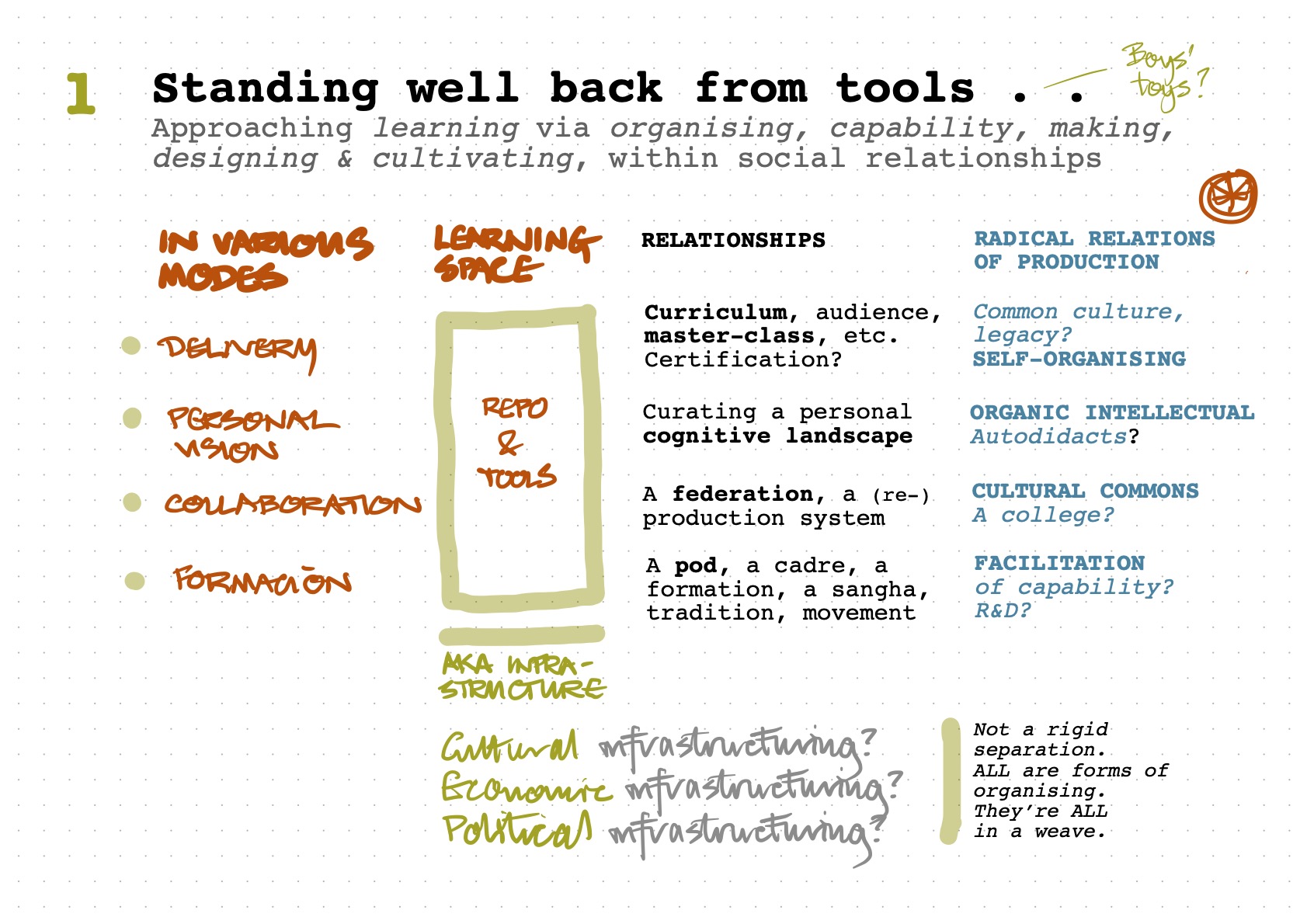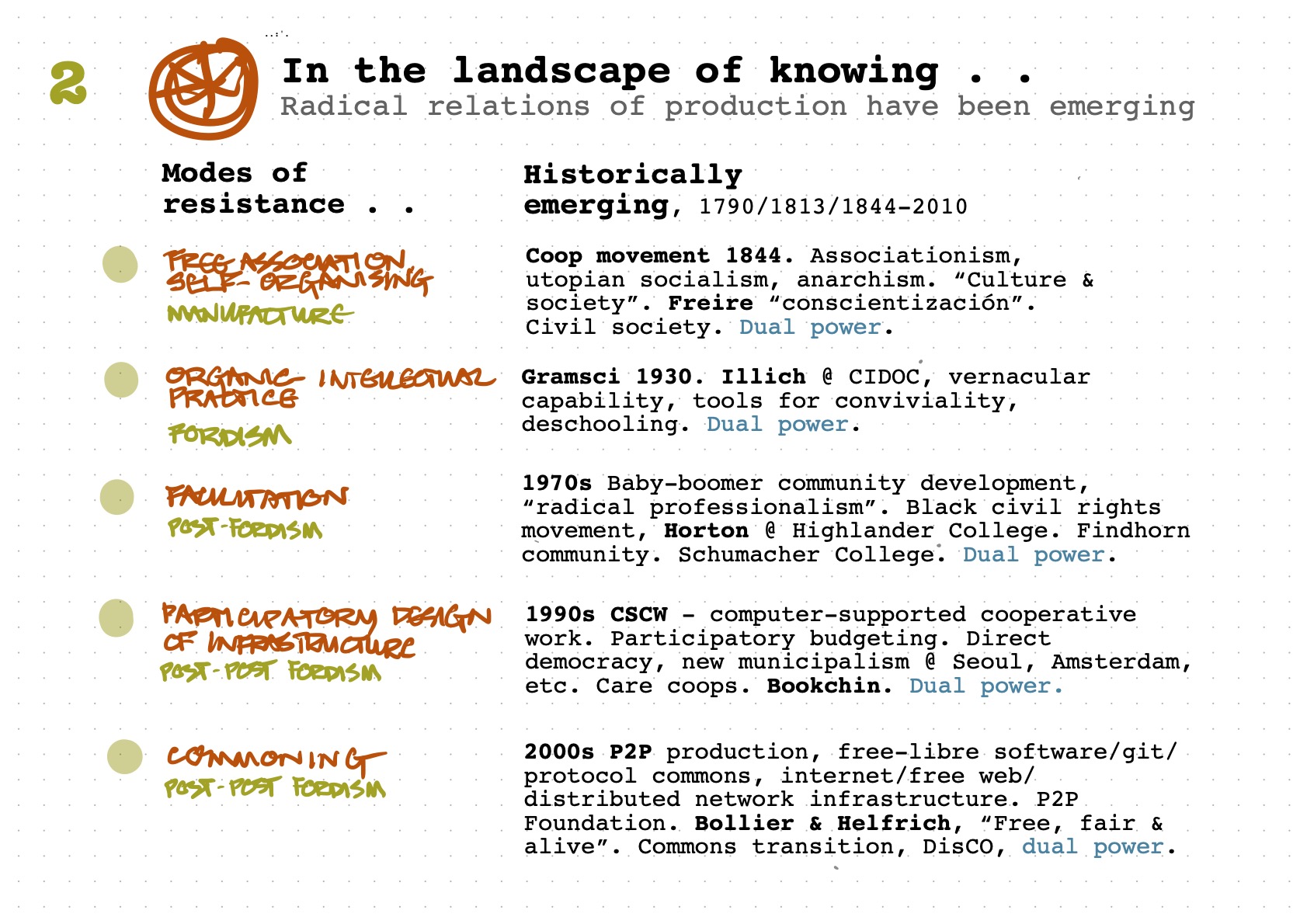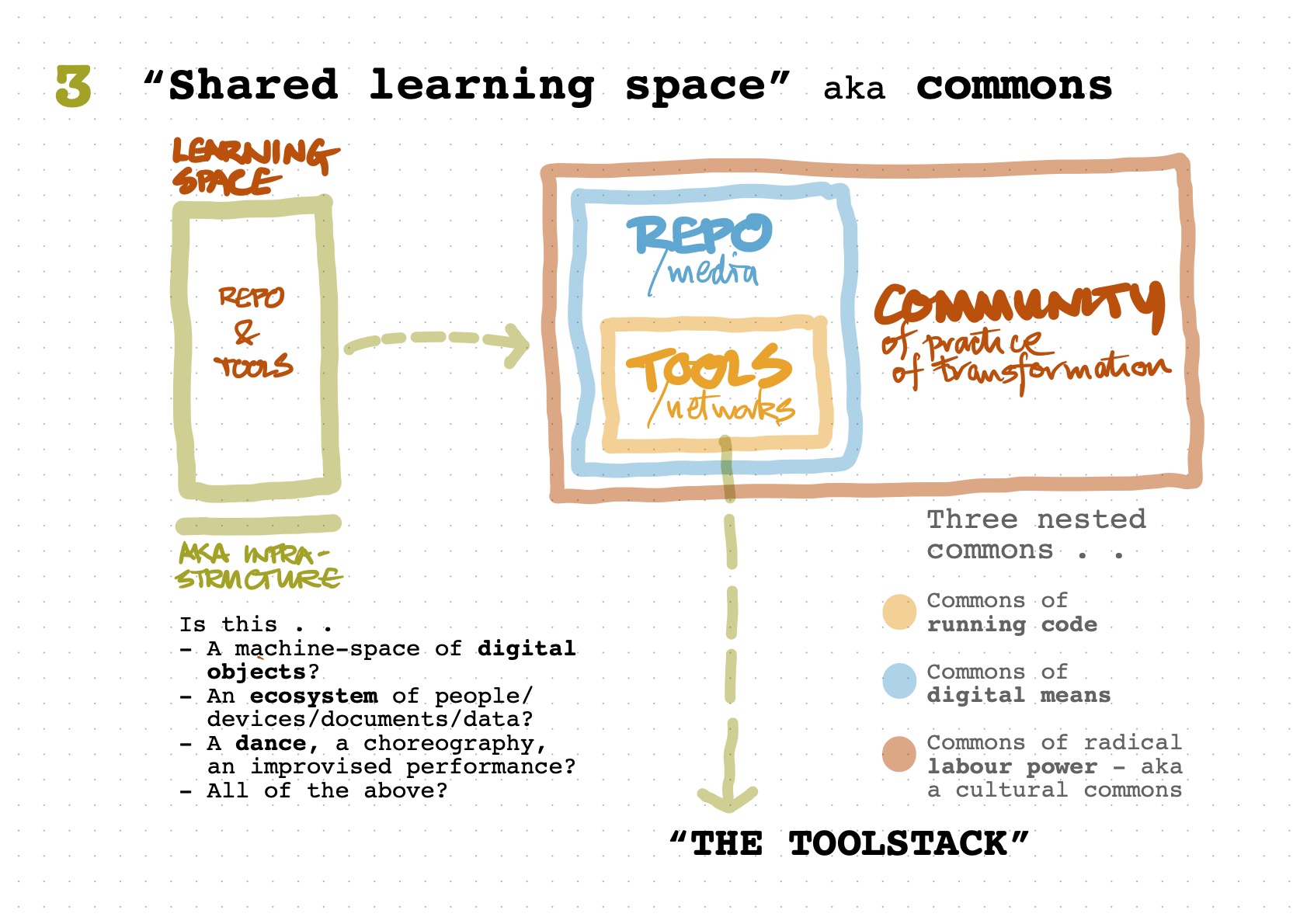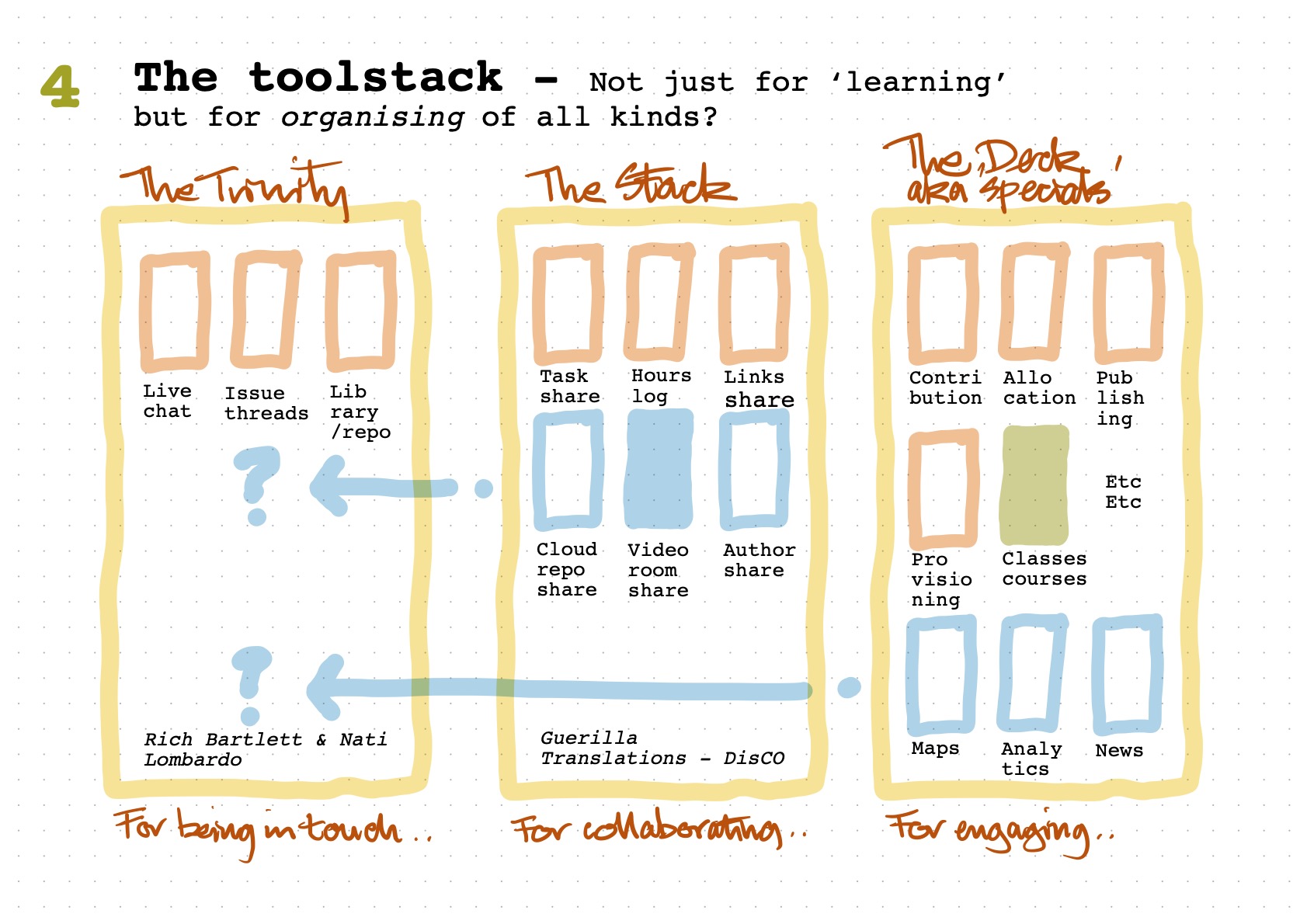Here we discuss a generalised toolstack for peer-to-peer organising, as distinct from a supposedly specialist toolstack for education or 'learning', or a digital 'learning space'.
There is a basic proposition here: in constructing learning space, diving into a specialised bundle of tools for delivering content to an audience might not be the move to make. There might be a bundle of more generic tools, for P2P collaborating and coproduction, that will do a large part of the work involved in researching, communicating understandings and making discoveries. In a collective.
> Be aware, builders at work. More to be added in the areas below xxx
Four original slides on the question of 'learning spaces' are here pdf ![]() . Synopsis follows . .
. Synopsis follows . .

1 Standing well back from tools
* Slide 1 - highlighting differing modes of ‘learning’, with varying dynamics . . • individual and collective • exploratory and authoritative • pedagogy and 'peergogy'.
> Differing modes call for ‘learning spaces’ **furnished in different ways**? To be added xxx

2 Relations of production in knowing, evolving & cultivated across generations
* Slide 2 - capability in transformative practice rather than ‘learning’, highlighting historical discoveries across 250 years, of social relations in the production of movement capability.
> These give us today a repertoire of relationships **to build into radical forms of cultural process**: • free association • organic intellectual practice • facilitation • participatory design of infrastructure • commoning. We should design and evaluate our forms of communication and interaction thro these, which intrinsically will build **capability in transformative practice**? aka 'learning'? formaciòn?

3 - The nature of (digital) learning space
* Slide 3 - asking questions about **the nature of ‘the space’** through which learning might be enacted • A *machine-space* of digital objects? • An *ecosystem* of humans/devices/media/documents/data? • *A dance*, an improvised performance?
> Could be all of these - but each calls for a different kind of infrastructure, and enables a different kind of participation. Weaving them all together in use is also an area of skills, ranging *from facilitation to pedagogy to media design*.

4 Toolstack map - with developments
* Slide 4 - outlining a **‘toolstack’** model in three parts, derived from experiments over a decade or so. Digital toolstack • Rich Bartlett & Nati Lombardo (a generic and basic **‘trinity’** of tools for communicating, informing and deliberating) • Guerrilla Translations (a **‘stack’** of tools that incorporates the trinity, needed for purposeful, effective, systematic co-working). Plus . . • A further field of tools - a 'deck' of **‘specials’** - that might vary across differing domains of activity.
The basic proposition is that there may be parts of ‘the stack’ that now have become basic enough, that they should be promoted to ‘the trinity’ - thus, no longer ‘trinity’! Video rooms is one of these, Cloud storage is another. Also, there may be ‘specials’ that also are needed in more widespread and easily useable forms: for mapping, analytics, news.
Thus, no longer ‘a trinity’, but perhaps a 3x3 **‘extended trinity’** of fundamental tools? The challenge is, to have all collaborators using the same tools, across this range? And to choose good versions of each type of tool. And maybe, some question of integration - although what ‘integration’ means needs some attention. Extended trinity
---
This page is grown from a slide presentation. There is a 17min presentation of the slide deck here BBB playback ![]()